#indigenous american recipes
Photo




sumac lemonade.
#foodedit#food#food gifs#foodcore#recipes#mine#gifs#sumac lemonade#sumac#drinks#native american cuisine#native american recipes#indigenous american cuisine#indigenous american recipes
65 notes
·
View notes
Text
#talkin#tik tok#food#recipes#us national parks#land back#racism#white supremacy#indigenous americans
25 notes
·
View notes
Text

Navajo Fry Bread
11 notes
·
View notes
Text
Made Chickasaw Indian Molasses Bread today (it’s very good and very simple, check it out) and made my own grape juice as step one for our tribes Iconic grape dumplings.
For the juice, you can buy grape juice or just get really small, dark grapes and boil them. Then you strain out the skins + remaining fruit flesh. It’s really delicious! I recommend trying it even if you don’t want grape dumplings.
14 notes
·
View notes
Text
Sounds yummy
#cooking#indigenous#Native American cooking#native recipe#rice#🍚#native american#native#indigineous people#reservation#first nations#native tribe#paiute#tribal#tribe#rez#native america#native american history#nevada native#northern paiute#reservation dogs#colorado native#decolonize#history#nevada#recipe#cook#healthy
3 notes
·
View notes
Video
Sean Sherman cider braised turkey thighs-Yellowstone cookbook by Jackie Alpers
Via Flickr:
The relationship of Indigenous tribes to their land is a central theme in the Yellowstone TV series and I am honored to include Sean Sherman’s recipe for Cider Braised Turkey Thighs from his James Beard award winning cookbook, The Sioux Chef's Indigenous Kitchen in The Unofficial Yellowstone Cookbook. A portion of the sales of my cookbook will be donated to NATIFS (North American Traditional Indigenous Food Systems), promoting Indigenous foodways education and access. Visit natifs.org/ to learn more and make a dontation.
#Unofficial Yellowstone Cookbook#westerns#Jackie Alpers#recipes#western food#cooking#food#food photography#The Unofficial Yellowstone Cookbook#Indigenous Food#Indigenous Foodways#Indigenous#native american food#flickr
1 note
·
View note
Text
0 notes
Text
Herbalism book reccomendations 📚🌿
General herbalism:
The Herbal Medicine-Maker's Handbook by Green J. (2011)
20,000 Secrets of Tea: The Most Effective Ways to Benefit from Nature's Healing Herbs by Zak V. (1999)
The Modern Herbal Dispensatory: A Medicine-Making Guid by Easly T. (2016)
A-Z Guide to Drug-Herb-Vitamin Interactions by Gaby A.R.
American Herbal Products Association's Botanical Safety Handbook (2013)
Medical Herbalism: The Science and Practice of Herbal Medicine by Hoffman D. (2003)
Herbal Medicine for Beginners: Your Guide to Healing Common Ailments with 35 Medicinal Herbs by Swift K & Midura R (2018)
Today's Herbal Health: The Essential Reference Guide by Tenney L. (1983)
Today's Herbal Health for Women: The Modern Woman's Natural Health Guide by Tenney L (1996)
Today's Herbal Health for Children: A Comprehensive Guide to Understanding Nutrition and Herbal Medicine for Children by Tenney L. (1996)
For my black folks!!!
African Medicine: A Complete Guide to Yoruba Healing Science and African Herbal Remedies by Sawandi T.M. (2017)
Handbook of African Medicinal Plants by Iwu M.M. (1993)
Working The Roots: Over 400 Years of Traditional African American Healing by Lee M.E. (2017)
Hoodoo Medicine: Gullah Herbal Remedies by Mitchell F. (2011)
African American Slave Medicine: Herbal and non-Herbal Treatments by Covey H.C. (2008)
The Art & Practice of Spiritual Herbalism: Transform, Heal, and Remember with the Power of Plants and Ancestral Medicine by Rose K.M. (2022)
Indigenous authors & perspectives!!
Braiding Sweetgrass: Indigenous Wisdom, Scientific Knowledge and the Teachings of Plants by Kimmerer R.W. (2015)
Gathering moss by Kimmerer R.W. (2003)
The Plants Have So Much To Give All We Have To Do Is Ask by Siisip Geniusz M. (2005)
Our Knowledge Is Not Primitive: Decolonizing Botanical Anishinaabe Teachings by Djinn Geniusz W. (2009)
Ancient Pathways, Ancestral Knowledge: ethnobotany and ecological wisdom of indigenous peoples of northwestern North America by Turner N. (2014)
A Taste of Heritage: Crow Indian Recipes and Herbal Medicines by Hogan Snell A. (2006)
Medicines to Help Us by Belcourt C. (2007)
After the First Full Moon in April: A Sourcebook of Herbal Medicine from a California Indian Elder by Grant Peters J. (2010)
Latin american herbalism works!!
Earth Medicines: Ancestral Wisdom, Healing Recipes, and Wellness Rituals from a Curandera by Cocotzin Ruiz F. (2021)
Hierbas y plantas curativas by Chiti J.F. (2015)
Del cuerpo a las raíces by San Martín P.P., Cheuquelaf I. & Cerpa C. (2011)
Manual introductorio a la Ginecología Natural by San Martín P.P.
🌿This is what I have for now but I’ll update the post as I find and read new works, so keep coming if you wanna check for updates. Thank you for reading 🌿
#herbalism#herbal medicine#herbal health#green witch#green witchcraft#green magic#herbal magic#herbal witch#herbal witchcraft#plant medicine#plant magic#plant witch#folk healer#healing witch#healing magic#curanderismo#yerbera#curandera#rootwork#rootworker
2K notes
·
View notes
Text
Harvest Moon - September 28, 2023
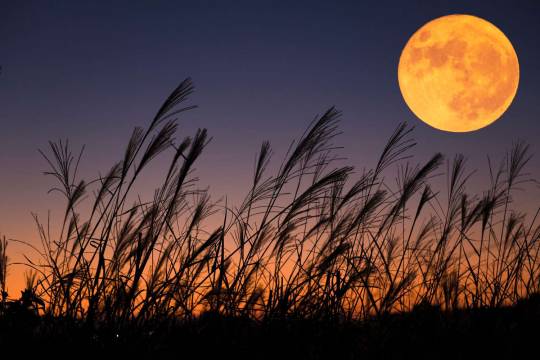
The summer heat might be hanging on, but it's time to get excited for autumn shenanigans all the same. Grab your canning supplies and your favorite cider mug - it's time for the Harvest Moon!
Harvest Moon
The Harvest Moon is the name given to the full moon which occurs closest to the autumnal equinox. It does not matter whether the moon occurs before or after the equinox or in which month it falls. In some years, this means the Harvest Moon may occur in October, in which cause the September moon might go by the name of Corn Moon or Rice Moon, depending on where you are.
In 2023, the Harvest Moon falls once more in the month of September. The same will happen in 2024, when the Harvest Moon will also be a supermoon! However, in 2025, the September moon will come early in the month, making it a Corn Moon. The Harvest Moon that year will be in early October.
The September moon is particularly beloved by farmers in the Northern Hemisphere, as it rises earlier and shines brighter than other full moons due to the relative angle of the Earth in relation to the moon during the equinox, which is helpful for lighting up the tail end of those long work days. In addition, the Harvest Moon may also appear full for multiple nights, providing additional illumination for labor or evening strolls. As such, while the peak of the Harvest Moon will occur in the wee hours of September 29th, it will appear to be full on both the 28th and 29th.
Other North American Indigenous names for the September moon include a number of variations of the aforementioned Corn Moon (used by numerous nations), such as Corn Maker Moon (Abenaki), Corn Harvest Moon (Dakota), and Corn Is Harvested Moon (Zuni). Other names refer to seasonal changes or animal behavior, such as Autumn Moon (Cree), Falling Leaves Moon (Ojibwe), Leaves Turning Moon (Anishinaabe), and Rutting Moon (Cree). Some European and modern pagan names for the September moon include Barley Moon (Old English), Singing Moon (Celtic), and Fruit Moon (general).
It's also worth noting that our Jewish friends and neighbors will be celebrating Rosh Hashanah this month, so remember to share your apples and honey and wish them Shanah Tovah (Happy New Year)!
What Does It Mean For Witches?
As autumn begins, we continue to reap what we've sown over the course of the year. It's a time to pause and reflect on what we've accomplished, let go of any unnecessary burdens we're still carrying, and focus on taking care of hearth and home for the cold months ahead. Now is a good time to do one last clutter purge or finish those repairs you've been putting off all summer!
Change is in the air as well, and transformations begun earlier in the year will burst into vibrant life. Just as the flowers bloom in spring, the leaves turn in the fall, and those of us who come alive in the autumn will start to fell that zing coming back.
Community also comes back into focus during harvest time, both because of the sharing of resources and the accompanying start of the school year. Take a moment to reinforce positive and supportive connections with friends and neighbors, or reach out to your local or online circle to strengthen existing bonds.
This a time of great abundance, so if you've been meaning to draw any kind of increase into your life, take steps to do so now. Harness that Harvest Moon energy to help carry you through the lean times in comfort and plenty.
What Witchy Things Can We Do?
This is the time for feasting, bonfires, and outdoor gatherings. September and October will give us a few more warm weeks before the weather turns cold and rainy, so make the most of it! Have a potluck supper with a menu made of everyone's favorite seasonal recipes. Visit a local farmer's market and bring home that fresh seasonal produce. Thank the earth for the bounty it provides and renew your promise to be a good steward of the land where you live.
Technically, this is the second "harvest" moon of the year, since the harvest of most seasonal crops began back in August with wheat and corn and late summer fruits. The harvest of corn and grain continues into September and is joined by additional late-season fruits and vegetables, the most iconic of which is the annual apple crop.
Apple-picking is easily my favorite autumn activity and it's fantastic way to get outdoors, get some fresh air, and come home with tasty produce for uses both mundane and magical. From cider to applesauce to pies, apples are delightfully versatile. They also feature in a number of folk traditions and party games which double as divination rituals.
Continue your preparations for winter by canning or preserving fresh foods, hanging harvested herbs and flowers to dry, or refreshing your stocks of moon water and magical oils. Make your own magical brews using a stock pot as a cauldron and soups, stews, punch, cider, and mulled wine as your potions. Kitchen witches, your time is NOW!
Wear the colors of the season boldly and revel in all the gifts you've received and joys you've experienced so far this year. If you've been particularly blessed, pay it forward to share the bounty with others. Reflect on everything you've accomplished, celebrate your progress, and maybe set one or two small goals for the end of the year.
And since the decorations are already appearing in stores, start stocking up for Halloween!
Happy Harvest Moon, witches! 😊🍎
Further Reading:
Additional Lunar Calendar posts
Secular Celebrations - Autumn Equinox
Harvest Moon, The Old Farmer's Almanac.
What Is The Harvest Moon?, The Old Farmer's Almanac.
Harvest Moon 2023: The Spiritual Meaning of September's Full Moon, The Peculiar Brunette.
Full Moon 2025 Calendar, Full Moonology.
Rosh Hashanah, Wikipedia.
Everyday Moon Magic: Spells & Rituals for Abundant Living, Dorothy Morrison, Llewellyn Publications, 2004.
(If you’re enjoying my content, please feel free to drop a little something in the tip jar or check out my published works on Amazon or in the Willow Wings Witch Shop. 😊)
#Harvest Moon#lunar magic#moon magic#lunar calendar#witchcraft#witchblr#witch tips#witch community#pagan#autumn
436 notes
·
View notes
Text
How I Get the Most Out of Meat When Cooking

As someone who 1.) was 100% vegetarian for ethical/religious reasons until very recently, and 2.) recently had to reintroduce meat for vitamin deficiency reasons, limiting waste as much as possible when I cook with meat is really important to me. For one thing, I feel like I owe it to the animal that died to get as much use as possible out of its body as a way of honoring its death. For another, meat is expensive (ethically raised meat even more so) and I want to get my money's worth.
I recently bought a bunch of lamb for my family's holiday dinner, so I wanted to share my attempt to practice the Honorable Harvest in my meat consumption. This is new to me, but I wanted to document the attempt because it's been a fun learning process for me! If you want to actually learn about honorable consumption I encourage you to read the works of Robin Wall Kimmerer and other indigenous ecologists, since the Honorable Harvest is based on indigenous North American practices. (Though there are other cultural practices all over the world.)
Step One: Sourcing the Meat
I am very fortunate to have enough disposable income to buy ethically raised meat, which tends to be more expensive. This is a privilege. Other people are not able to spend this extra money on their meat, and that doesn't make me better than them. Feeding yourself is morally neutral, and a tight budget is not a moral failing. Most meat alternative products (Beyond Beef, Impossible, etc.) are also pretty expensive. If the factory-farmed meat at the supermarket is the only thing in your budget, use that.
If you DO have some extra funds, local farms are a great place to source meat. The reason we had lamb for the holidays is because a local farm recently culled their herd and had lamb on sale. In the past we've gotten beef from a relative who raises cattle. I encourage you to learn about farms in your area and what they have to offer. CSAs and farmers' markets are great places to start. You can also ask around at local restaurants about where they source their ingredients.
When I say "ethically raised meat," what I'm really talking about is pasture-raised animals. Cage-free animals may not live in cages, but they can still be kept in cramped, dirty, inhumane conditions and be sold as "cage free." Pasture-raised animals are able to graze and forage and generally wander around within a paddock. For some animals like chickens you can also look for "free range," which means the animals are unfenced and are able to wander freely. Since I don't cook meat often, I try to get free range or pasture-raised meat when I do buy it.
In some areas, you may also be able to find certified ethically slaughtered meat, which means the slaughtering process has been designed to cause as little suffering to the animal as possible. That kind of certification isn't really available where I live, but it might be for you!
And of course, hunting or fishing yourself is also an option. If you kill the animal yourself, you know exactly how it died and can take steps to limit suffering as much as possible. Hunting isn't a skillset I have, but if you do more power to you!
Step Two: Cooking the Meat
This is the easy part. Depending on the cut of meat you got and the dish you are cooking, you may need to remove bones or trim fat, but aside from that it's just following a recipe.
For our holiday lamb stew, I used this recipe. I have Celiac disease, so I subbed gluten-free flour and replaced the beer with red wine. I also added rosemary and garlic for a more Mediterranean flavor to compliment the wine.
Step Three: Organs and Bones
This is where the breakdown is for a lot of Americans. We don't cook with bones or organs very often, and we tend to throw away whatever parts of the animal we don't want. That is not honorable consumption. Part of the Honorable Harvest is using every part of the being that died to feed you.
Most organs make great stew meat. My favorite Nicaraguan beef stew is made with tongue, and my indigenous Hawaiian relatives make stew with pig feet. And while I don't like them, lots of my Southern family members love chitlins (pickled pig intestines). Lots of cultures eat organs, and you'll find plenty of delicious recipes if you look!
Bones are typically used to make stock, which can be used as a base for future soups and stews. There are lots of recipes for DIY stocks and broths, but I usually fry some onions and/or garlic, deglaze with wine, and then add the meat/bones and the water, plus salt, pepper, and herbs for flavor. Most animal bones can produce two batches of stock before they lose flavor. (For really flavorful stock, leave some meat on the bones.)
Once the stock is done, you'll still have bones to deal with. Contrary to popular belief, cooked bones are not safe for dogs to chew on. (But raw bones usually are!) Instead, I strip any remaining meat and gristle from the stock bones, give those scraps to my pups as a treat, and then use the stripped bones for something else. With a little extra processing, the bones can be used as a fertilizer in a garden, a calcium supplement for chickens, or a safe treat for dogs and/or cats.
This was my first time processing bones, but after boiling them for, like, 12 hours in water with salt and vinegar, they were soft enough to break apart with my hands. I'm going to grind them to make bone meal.
#long post#cooking#the honorable harvest#robin wall kimmerer#sustainable cooking#sustainable#sustainability#animism#kitchen witch#kitchen witchcraft#kitchen witchery#green witch#green witchery#solarpunk#cottagecore#food waste#mine#my writing
254 notes
·
View notes
Text
Book Review: Wild Witchcraft by Rebecca Beyer

TW: Alcohol mentions and tallow mentions. Poison Path things as well.
This is: Wild Witchcraft by Rebecca Beyer
Rating: 9/10
Pros: An amazing outlook into animism, herbalism, and foraging in a safe, sustainable and non-appropriative way! The instructions on how to garden were very to the point and explained some complicated ideals in an easy to digest way, I think one of my favorite quotes from the book that stuck with me while reading was,
“Just when I think magic has been cut down and paved over; a dandelion has pushed it’s way out of the cracks in the cement.”
I hope that quote helps you understand what sort of writing to expect out of this book! As someone that grew up learning planting from my Papaw who took classes on the subject after getting out of WWII through a governmental program and was a farmer before that, some of the information on growing was things I already knew. But for a beginner just looking into ‘wildcrafting’ or foraging or just plain growing your own herbs for witchy things?
Get this book.
The author, while an herbalist, breaks down each plant she mentions and includes plenty of warnings and suggestions for use both magical and holistically. She covers the poison path in a very easy to understand way while making sure you understand it’s not a beginner’s thing, and certainly not one to take without serious consideration first. The author takes careful note of Indigenous practices and makes sure to drive it home that their voices are to be heard over anyone else’s when it comes to taking care of American land. There are so many rituals and remedies included in this book that I have a feeling I’ll be referencing it quite a lot, and not just for the gardening and foraging tips!
Did I mention the entire 11 pages of a bibliography in the back?? No? Well there’s that too. My academic heart is thrilled.
Cons: Honestly? The only real con I have is that the author spends a chunk of time going over the Wheel of the Year which is a wiccan construct in a book that otherwise doesn’t have any wiccan imagery or practices up until this point. It feels…weirdly thrown in? But she also includes multiple folk traditions that were common amongst those particular time periods so…it is worked in but it still feels a little odd and jarring to me.
The author also mentioned the use of tallow as a commonly used oil for salves, which is correct but some people are uncomfortable with the idea and I understand that! Since the author has tincture recipes as well she does mention the use of alcohol in steeping purposes.
Overview: Animism, foraging, herbalism, and being safe to the environment. Good stuff all around!
#buggy's book reviews#Wild Witchraft is such a good little book!#witchblr#folk magic#forraging#animism#herbalism#Appalachian Folk Magic
535 notes
·
View notes
Text
#talkin#tik tok#food#recipes#nikki.mov#black people#indigenous americans#george crumb#catherine wicks
30 notes
·
View notes
Text
Avocado orchards had carpeted the gently undulating hills around the sacred lake of Pátzcuaro with stodgy green bushes. Here, before the cataclysmic arrival of the first envoys dispatched by Hernando Cortes from the Aztec capital over the mountains to the East, [...] the Purépecha had sown maize, amaranth, zucchini, cacao, cotton, tomato, beans, a dozen types of chili, and much more.
Now the monotonous “green gold” of the avocado boom had colonized the entire Mexican state of Michoacán. [...] [I]t was shocking to think that the cause of the disaster was America’s great patriotic party: the National Football League’s Super Bowl. A flurry of advertising creativity on behalf of the Mexican avocado was unleashed every year during the multi-million-dollar sports broadcast. [...] “Is your life just terrible?” asks the comic actor Chris Elliott, star of Scary Movie 2 and Scary Movie 4, in the 2019 spot. “You deserve more! Spread an avocado on top of everything!” [...] A few days before the Super Bowl, the domestic diva Martha Stewart [...] had released on social networks her latest recipe for guacamole [...]. Guacamole was now an obligatory snack for the 100 million or so Americans who watched the Super Bowl. In February of 2017, 278 million avocados -- most of them from Michoacán -- had been sold during the days before the game in [the US] [...].
---
The avocado had become the star product of Mexican food production in the age of the North American Free Trade Agreement (NAFTA) [...] since NAFTA was signed in 1994 [...]. [Mexican] farmers produced 16 times more than the formerly dominant Californian growers. [...] Moreover, the avocado was now classified as a “superfood” [...].
It had not always been like this. In the 1950s, the avocado was known unsentimentally as the crocodile pear [...]. Imports from Mexico were banned until 1997 [...] . When complete liberalization was announced in 2007, Michoacán had become an unbeatable competitor for the Californian avocado growers. The Mexican producers specialized, like their Californian rivals, in the Hass variety of avocado, more meaty than those that the Purépecha had [...] consumed over the millennia, and with a tough skin that protected the pears during long hauls in chilled container trucks to El Paso or Tijuana and then beyond to the big US consumer markets. [...] [T]he Hass avocado was perfectly suited to the global market [...]. Michoacán, whose crystalline lakes had earned it the name of the “land of fish” in the indigenous language of Tarasco, would never be the same.
By 2020, 80 percent of the avocados consumed in the United States came from Michoacán [...].
---
Now in the 21st century, on the outskirts of Uruapan, the frenetic capital del aguacate, the new economy of agribusiness took shape [...]. Further west on the shores of Lake Pátzcuaro, the monoculture had not yet colonized the entire landscape, but the advance of the avocado seemed unstoppable. [...] “Practically everybody here wants an avocado orchard [...],” explained [FFB], a resident of the Purépecha indigenous community of Jarácuaro on the shores of the lake. [...] [H]e was horrified by the extent of environmental destruction. “They pump water from the lake to water the avocado orchards [...]. It’s pillage. [...]”
The falling water level, together with the introduction of the rapacious predator tilapia, had wiped out almost all the [...] [native] fish species. Of the cornucopia of marine life that had fed the Purépecha cities, only the diminutive silvery charal remained. The same occurred at other great freshwater deposits in Michoaczán. [...] The Purépecha communities on the shores of the lake, a landscape of stunning beauty where dense pine and ilex oak forests met white nymphaea lilies floating on turquoise water, were girding themselves for the arrival of the aguacateros, avocado producers [...].
---
“They put a gun to your head and tell you to sign the deed before the notary. That’s how the transfer of land is agreed upon,” explained [GV], a sociologist at the University of San Nicolas de Hidalgo in Morelia [...].
Meanwhile, large exporters and avocado brokers -- some of them international brands like Del Monte -- were profiting by purchasing from producers at dirt-cheap prices and reselling to the US supermarket chains at very attractive ones. “They pay a dollar per kilo of avocado here and sell it for eight at a Minnesota W*lmart,” said [GV].
In order not to squander such a reliable source of profits, “transnational corporations, just like the Canadian mining companies in Zacatecas, pay the extortion money [...],” he continued.
---
Text by: Andy Robinson. Gold, Oil, and Avocados: A Recent History of Latin America in Sixteen Commodities. 2021. [Bold emphasis and some paragraph breaks added by me.]
333 notes
·
View notes
Text


Arnadí, also known as carabassa santa ("holy pumpkin"), caramull ("brim") or cassoleta de Dijous Sant ("Holy Thursday little casserole") 🍰
It's a cake made of chestnut and pumpkin eaten during the Holy Week in some areas of the Valencia area and the Central Valencian Country.
The most widespread recipe uses toasted or boiled pumpkin, boiled sweet potatoes, lemon peel, almonds, pine nuts, egg yolks, sugar and cinnamon.
The origin of this dish is unknown, but it's documented in the area since at least the 1600s. Some food historians point that it might be related to an Amazigh (=indigenous Northern African) dish called sellou (سْلّو), tquawt (تْقاوْتْ), sfouf (سْفوفْ), zammitta (الزٌمٌيطة) or bssisse (بْسيِسْ), depending on the region, which is eaten for Ramadan.

An Amazigh sellou. Photo by picturepartners.
The sellou is made of almond, cinnamon, wheat, oil or butter, and other spices that vary depending on the region. It has the same shape as the arnadí and is also decorated with almonds.
Another noticeable similarity is that both are eaten during their religion's holy time: Ramadan for Islam and the Holy Week for Catholics. They're both very important religious celebrations based on the lunar calendar and based on fasting or restricting food (for Ramadan, Muslims can't eat during sunlight hours and, for the Holy Week, Catholics aren't supposed to eat meat and eggs and have to eat simple humble food). Both religions view it as a way of sharing compassion with poor people and to distance themselves from Earthly desires, and in the case of Christians also to get closer to Jesus' suffering. Even though most people in historically-Catholic countries don't follow these religious rules anymore, it's still common to eat the traditional dishes of the time.
To get ready for the hours of fasting or reduced food intake, both communities have the tradition of eating high-calories, high-energy dishes, such as the arnadí and sellou.
The arnadí, in its current recipe, can't date back to the Middle Ages, when the Valencian Country was conquered by Islam and received Arab and Amazigh population. The reason is simple: its main ingredients (pumpkin and sweet potato) would not reach us until after the colonization of the American continent, where these species are from. But it can be possible that arnadí/sellou was made of almond paste at the time and, centuries later, they were changed for pumpkin and sweet potato paste, which is cheaper and it turned out to taste even better.
Photos and info source: Tasta'l d'ací.
#menjar#país valencià#arnadí#caramull#carabassa santa#cassoleta de dijous sant#setmana santa#food#amazigh#ramadan#religions#world religions#cultures#culture#religion#interreligious#ethnology#ethnography#holy week
91 notes
·
View notes
Note
idk if you know this but there is actually a lot of history behind of American food! for instance I'm from the American south and southern food is basically all either west African recipes or indigenous recipes or both. obviously a lot has changed over time and there are trends but still there is a lot of history there
YESS EXACTLY this idea that america food is just Burger or even that burger itself is not a beautiful thing. southern food is like... like that is my destiny. i need to eat cajun food i need to eat Grits and i need chicken and waffles and soul food and Sweet Tea!!
11 notes
·
View notes
Photo

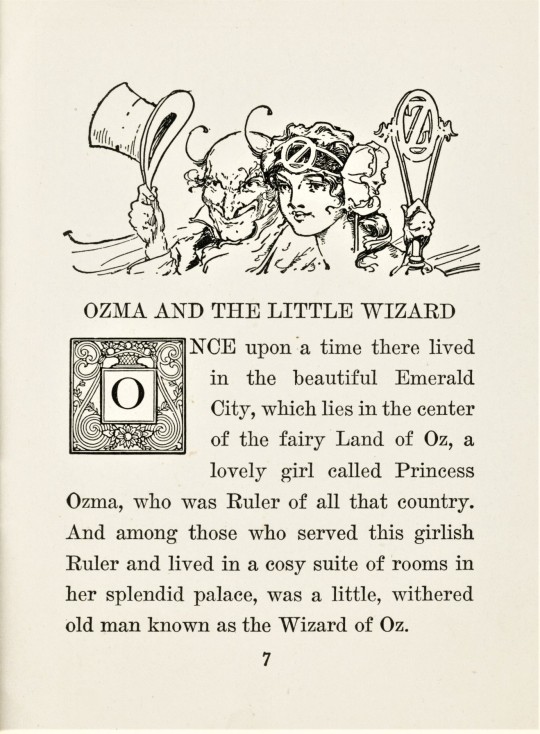


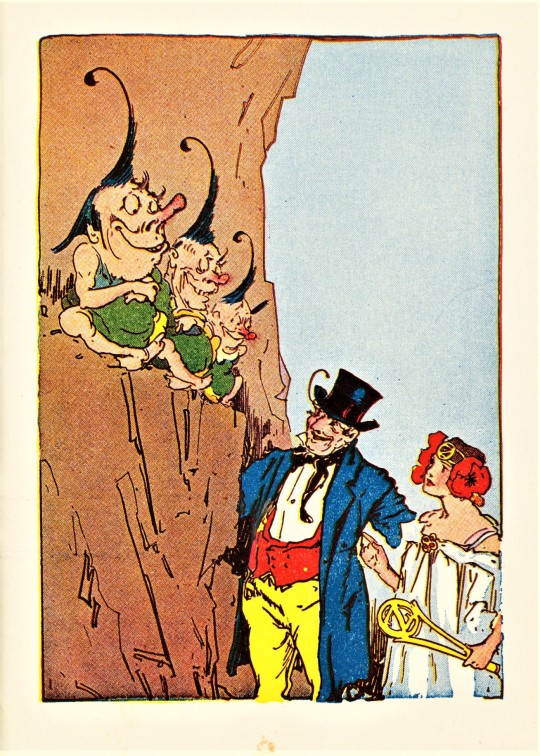
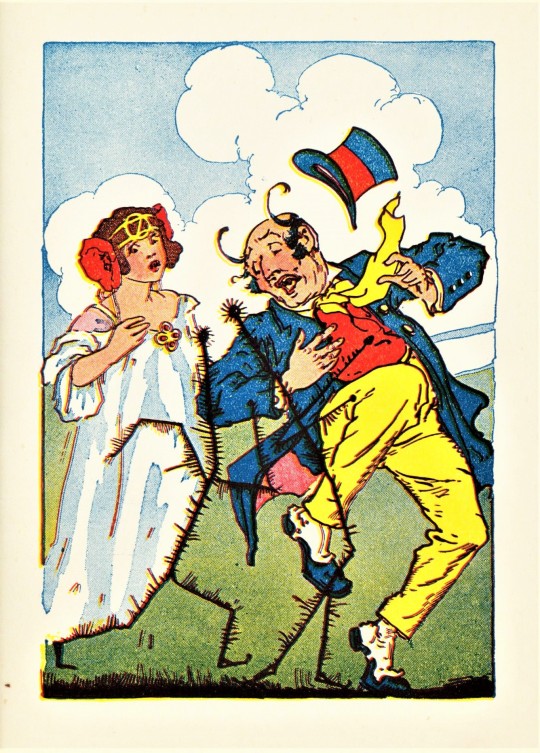
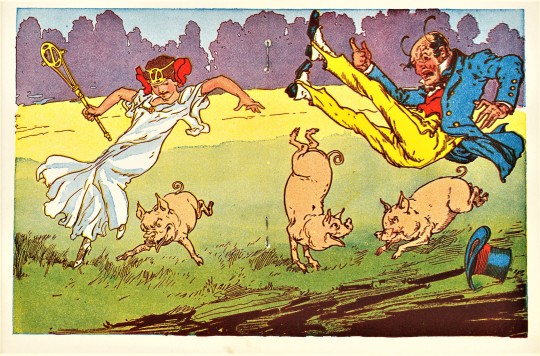



Milestone Monday
On this day, May 15 in 1856, the American fantasy writer L. Frank Baum, author of the beloved Oz stories, was born in Chittenango, New York. Baum was remarkably prolific, not only penning about twenty Oz novels, but also scores of short stories, other separate novels, and several series of novels, some under his own name and others under at least seven different pseudonyms. We don’t hold the original edition of The Wonderful Wizard of Oz (1900), but we do hold a few early editions of other titles, including this little 1932 booklet, Ozma and the Little Wizard, published in Chicago by Baum’s main publisher Reilly & Lee Co.
Ozma and the Little Wizard was originally one of the short stories in the Little Wizard Stories of Oz, six tales that were first issued as separate, small "Oz books in miniature" in 1913, and then in a collected edition in 1914 with illustrations by John R. Neill. All were published by Reilly & Lee predecessor Reilly & Britton. In the tale, Princess Ozma discovers in a tour of her kingdom with the Wizard that her subjects have been troubled by the pranks and harassment of a trio of imps. The Wizard tries turning them into other living things, which only results in a series of slapstick misadventures. He finally solves the problem by turning them into three inanimate buttons that he wears on his coat. Our later edition appears to have been published with the support of Jell-O and holds several ads and recipes illustrated with Oz characters.
It should not go without mentioning that despite writing wondrous tales that have been beloved by generations, L. Frank Baum also held racist beliefs and genocidal thoughts towards Indigenous Americans, and wrote that in order to preserve the progress of white people, indigenous peoples needed to be exterminated. In 2006, two descendants of Baum apologized to the Sioux nation for any hurt that their ancestor had caused. A sad note to end on, especially for someone who has delighted both children and adults with his stories for over 100 years.
View posts on other books by L. Frank Baum.
View other Milestone Monday posts.
#Milestone Monday#milestones#birthdays#L. Frank Baum#Oz#Oz stories#Ozma and the Little Wizard#Reilly & Lee Co.#john r. neill#Jell-O#illustrated books#children's books#Historical Curriculum Collection
54 notes
·
View notes
